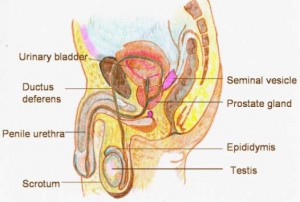Armstrong’s tribute to cancer victims on final leg of Tour de France thwarted

Lance Armstrong, and Team Radio Shack wanted to pay homage to those dealing with cancer in their final segment of the Tour de France today. The team planned on wearing black jerseys with the number 28, which Armstrong told CNN, “Today, we’re riding for every one of the 28 million people all over the world whose lives and families are affected by this disease.” However Tour organizers held up the race until the team changed back into their usual black and red jerseys. Armstrong was knocked out of contention this year when he suffered a couple of falls earlier in the race.
It is well known that Armstrong is a survivor of advanced testicular cancer,which spread to his abdomen, lungs and brain in 1996. Despite coming close to death, Armstrong not only survived but came back to win the Tour de France from 1999 to 2005. He set up his Livestrong foundation in 1997 to raise money and awareness about cancer and to help those fighting cancer.
Testicular cancer is a disease in which malignant (cancer) cells form in the tissues of one or both testicles. It is the leading cancer in men between the ages of 15 and 35. The American Cancer Society’s estimates that in the United States:
- about 8,400 new cases of testicular cancer will be diagnosed during 2009.
- about 380 men will die of testicular cancer
 The testicles are 2 egg-shaped glands located inside the scrotum (a sac of loose skin that lies directly below the penis). The testicles are held within the scrotum by the spermatic cord, which also contains the vas deferens and vessels and nerves of the testicles.
The testicles are 2 egg-shaped glands located inside the scrotum (a sac of loose skin that lies directly below the penis). The testicles are held within the scrotum by the spermatic cord, which also contains the vas deferens and vessels and nerves of the testicles.
The testicles are the male sex glands and produce testosterone (male sex hormones) and sperm. Germ cells are cells that contain the genetic material which an organism can pass on to its offspring. Germ cells within the testicles produce immature sperm that travel through a network of tubules (tiny tubes) and larger tubes into the epididymis (a long coiled tube next to the testicles) where the sperm mature and are stored.
There are two main types of testicular cancer- seminomas and nonseminomas. Both originate from the testicular germ cells but grow and spread differently and are treated differently. Nonseminomas tend to grow and spread more quickly than seminomas. Seminomas are more sensitive to radiation. A testicular tumor that contains both seminoma and nonseminoma cells is treated as a nonseminoma.
Risk factors for testicular cancer include:
- Having had an undescended testicle (a testicle that stays in the abdomen instead of coming down into the scrotum before birth).
- Having had abnormal development of the testicles.
- Having a personal or family history of testicular cancer.
- Being white.
Possible signs of testicular cancer include swelling or discomfort in the scrotum.
These and other symptoms may be caused by testicular cancer. Other conditions may cause the same symptoms. A doctor should be consulted if any of the following problems occur:
- A painless lump or swelling in either testicle.
- A change in how the testicle feels.
- A dull ache in the lower abdomen or the groin.
- A sudden build-up of fluid in the scrotum.
- Pain or discomfort in a testicle or in the scrotum.
Testicular cancer is can be detected on physical examination, ultrasound of the testicule, or with blood tumor marker tests such as alpha-fetoprotein (AFP), beta-human chorionic gonadotropin (hCG), lactate dehydrogenase (LDH).
Treatment of testicular cancer is dependent on what the stage of the tumor is. Staging is determined by how big and where the tumor is located, whether or not local lymph nodes are involved, and whether the tumor has spread to other organs, such as the liver, brain or bone. An extensive discussion of testicular cancer treatment can be found in our Resounding Health casebook on Testicular Cancer.
Source: NCI
























0 comments